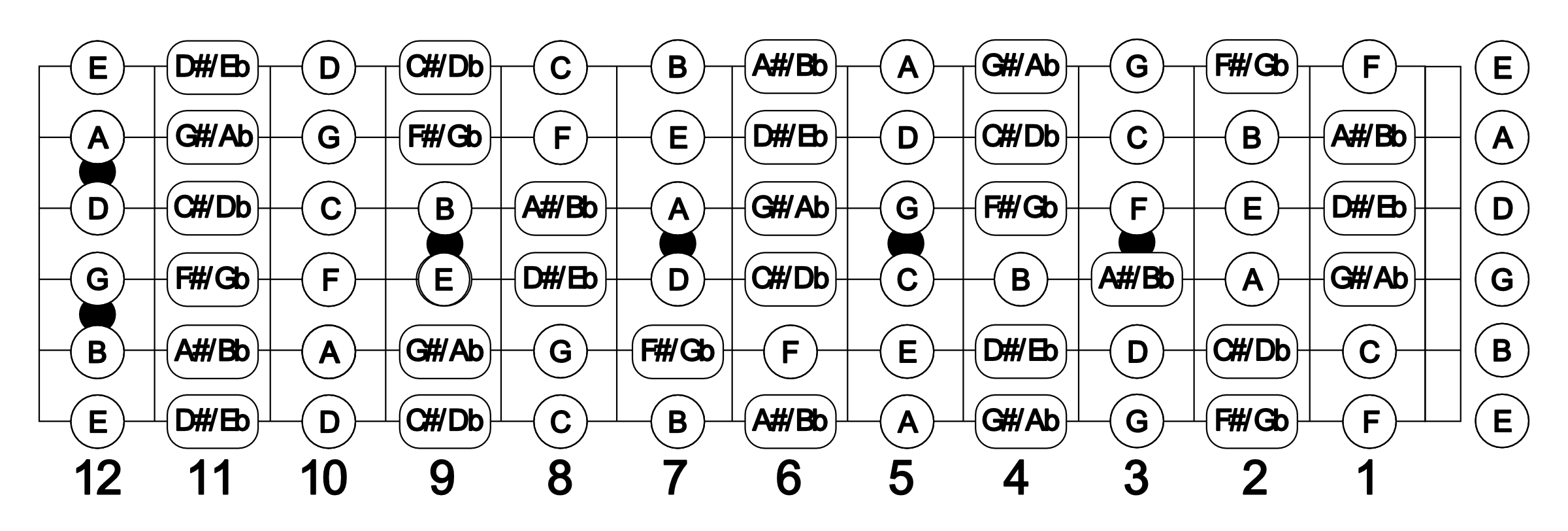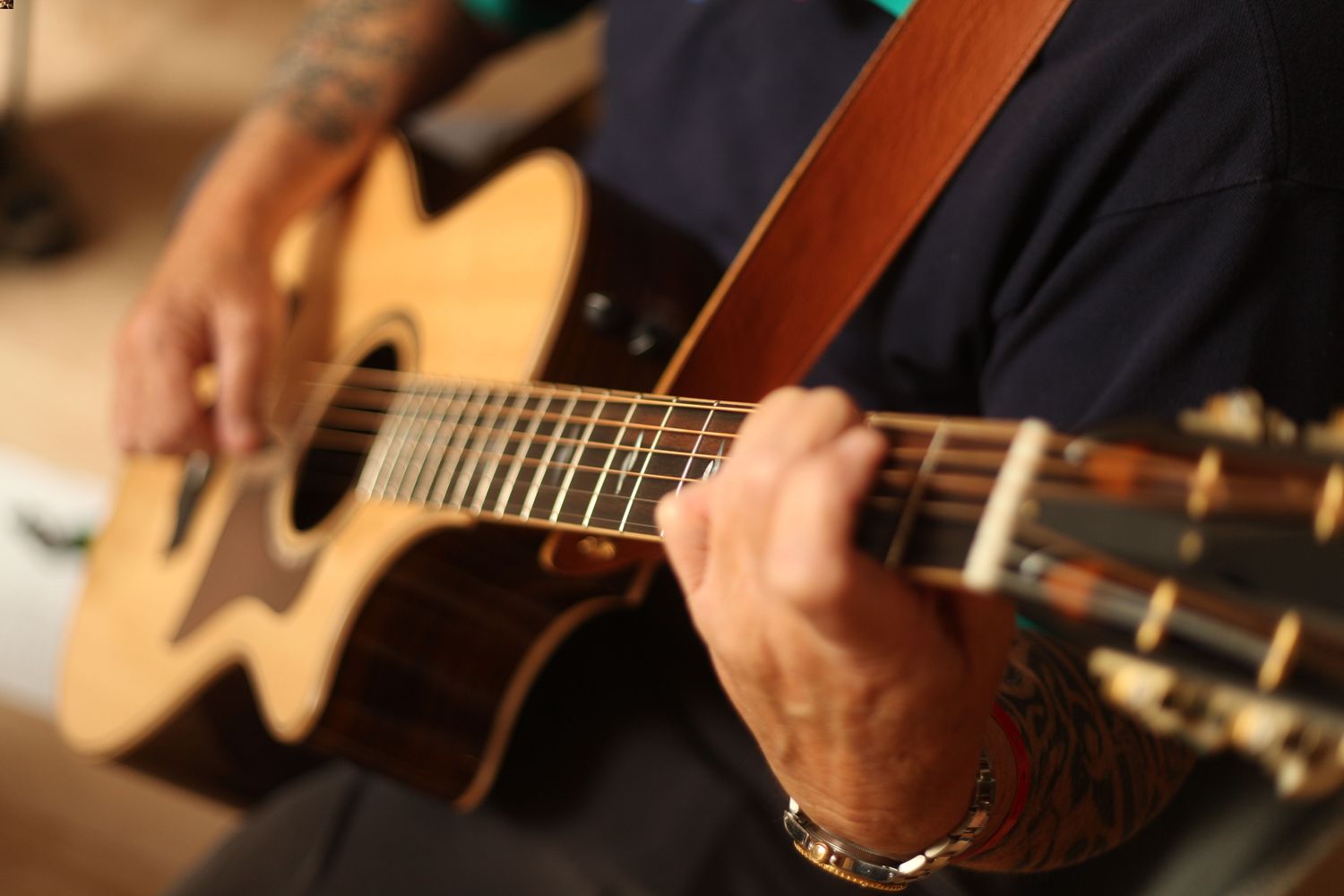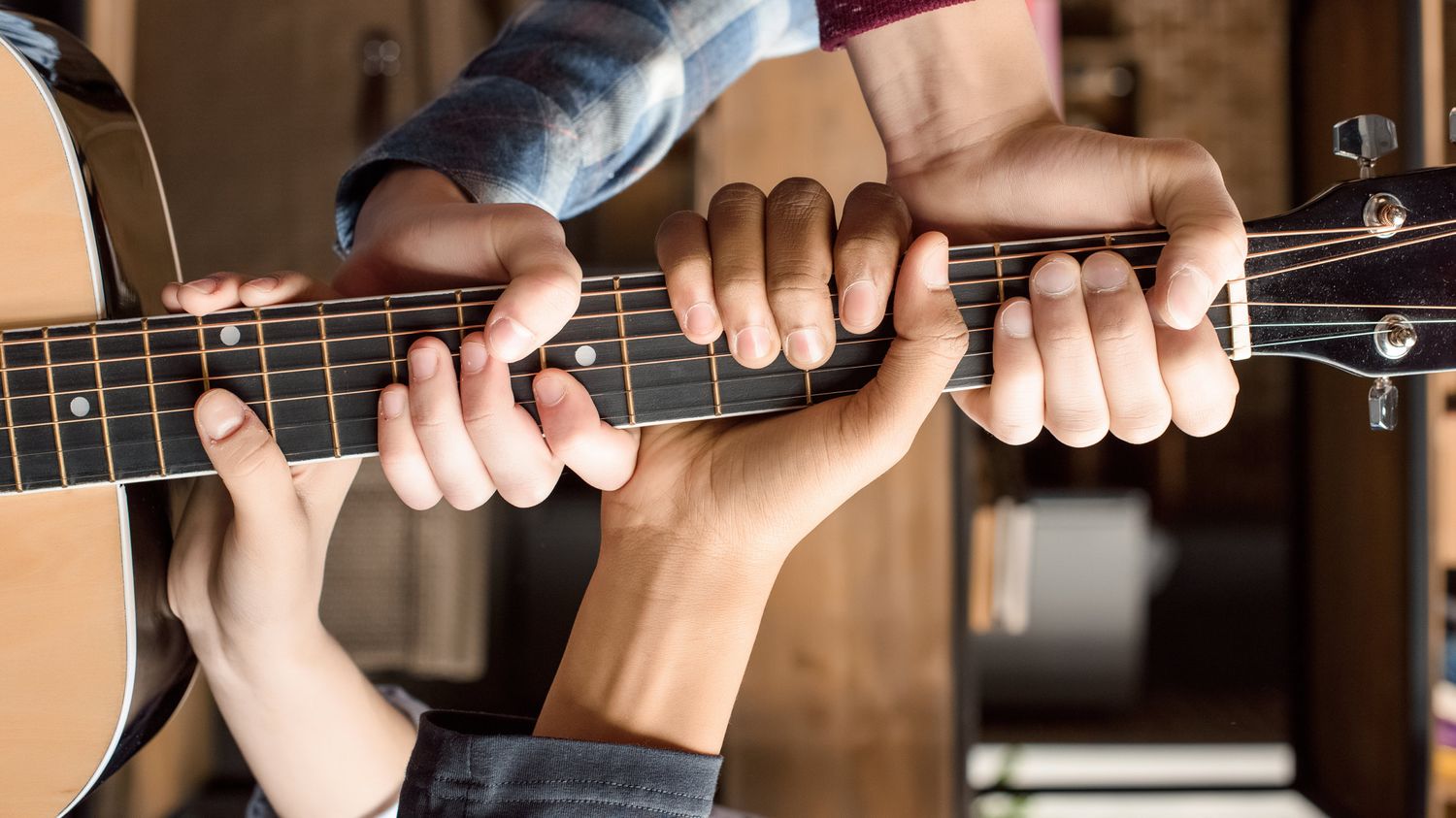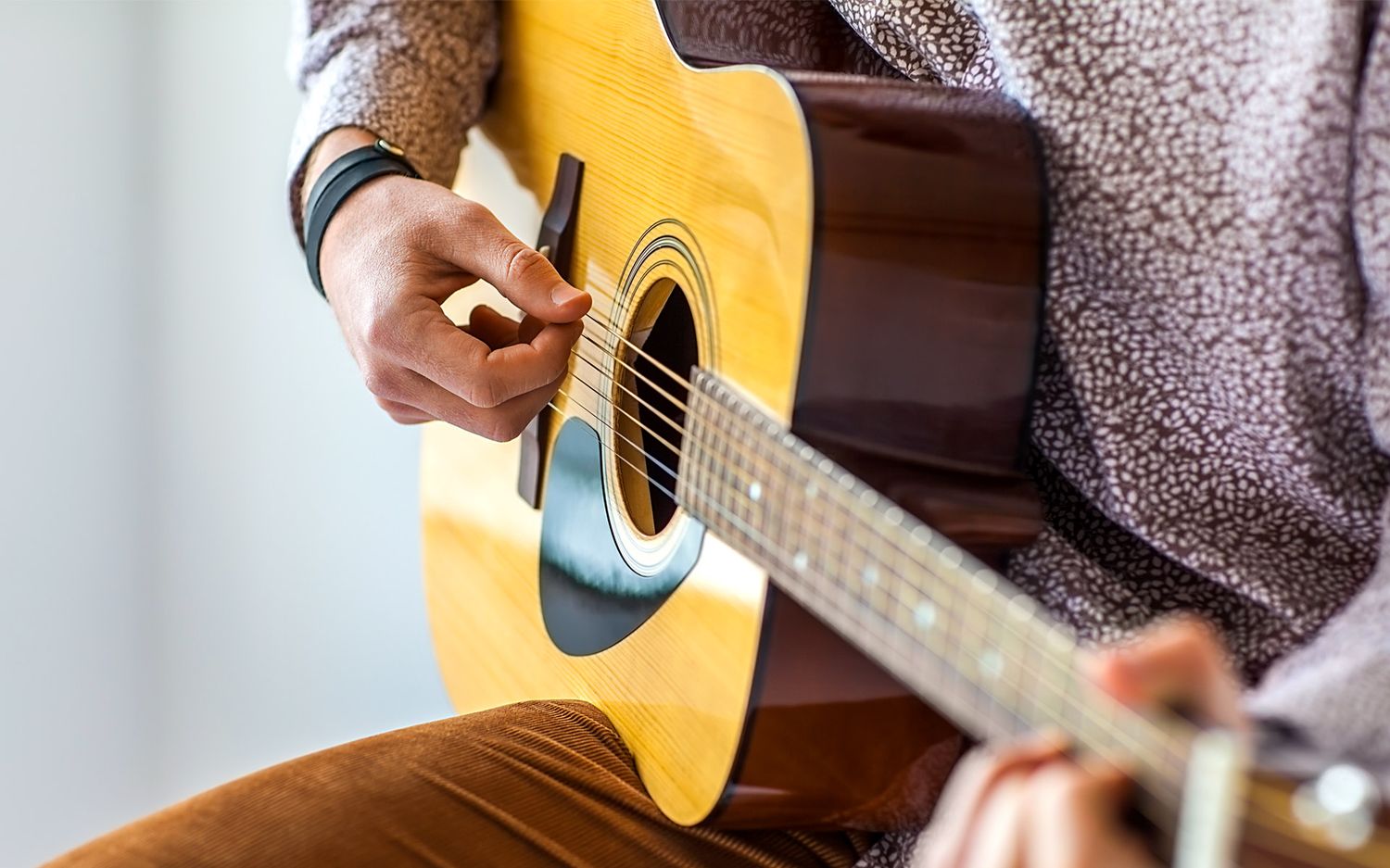Home>Instruments>Guitar>How Hard Is It To Learn The Guitar


Guitar
How Hard Is It To Learn The Guitar
Published: February 12, 2024
Learn how to play the guitar with ease! Discover the best tips and techniques for mastering the guitar quickly and efficiently. Start your musical journey today!
(Many of the links in this article redirect to a specific reviewed product. Your purchase of these products through affiliate links helps to generate commission for AudioLover.com, at no extra cost. Learn more)
Table of Contents
Introduction
Unleashing the Musical Journey: How Hard Is It to Learn the Guitar?
Embarking on a musical journey is a thrilling endeavor, and for many, the allure of mastering the guitar is irresistible. The guitar's versatility, from its role as the backbone of a band to its solo performance potential, makes it a popular choice for aspiring musicians. However, the burning question remains: How hard is it to learn the guitar?
Learning the guitar is a multifaceted experience that combines dedication, practice, and a deep appreciation for music. While it may seem daunting at first, the rewards of mastering this instrument are immeasurable. In this comprehensive guide, we will delve into the fundamentals of guitar playing, from understanding chords and scales to developing finger dexterity and building a repertoire. By the end of this journey, you will gain valuable insights into the intricacies of learning the guitar and be inspired to embark on your own musical odyssey.
Whether you're a novice seeking to strum your first chords or a seasoned player looking to refine your skills, this exploration into the world of guitar playing will provide valuable knowledge and inspiration. Let's embark on this melodic adventure and unravel the mystery of learning the guitar.
The Basics of Guitar Playing
Before diving into the intricate techniques and nuances of guitar playing, it’s essential to grasp the fundamental elements that form the backbone of this melodic pursuit. The guitar comprises various components, including the body, neck, frets, and strings, each playing a pivotal role in producing captivating sounds. Understanding the anatomy of the guitar sets the stage for an enriching learning experience.
One of the first steps in learning the guitar involves familiarizing oneself with the instrument’s tuning. Standard tuning for a six-string guitar is EADGBE, from the lowest-pitched string to the highest. Tuning ensures that the guitar produces harmonious notes and chords, laying the groundwork for melodious compositions and performances.
Furthermore, mastering the art of holding the guitar, positioning the fingers, and utilizing a pick or fingerstyle technique are essential skills that aspiring guitarists must develop. A comfortable and ergonomic posture not only enhances playing proficiency but also minimizes the risk of strain or injury, allowing for prolonged practice sessions and performances.
As with any musical pursuit, rhythm and timing are integral aspects of guitar playing. Understanding basic rhythm notation, such as quarter notes, eighth notes, and their respective rests, forms the rhythmic foundation for strumming and picking patterns. This rhythmic proficiency lays the groundwork for seamless coordination between the fretting hand and the strumming/picking hand, enabling fluid and captivating performances.
Whether you’re drawn to the acoustic allure of a classical guitar or the electrifying resonance of an electric guitar, familiarizing yourself with the basics of guitar playing is an enriching and foundational step in your musical journey. With a strong grasp of the instrument’s anatomy, tuning, playing technique, and rhythmic fundamentals, you are poised to delve deeper into the captivating realm of guitar mastery.
Learning Chords
Chords form the harmonic backbone of countless songs and compositions, making them a fundamental aspect of guitar playing. Mastering chords involves understanding their structure, finger placement, and transitioning between different chord shapes with precision and fluidity.
Beginners often start with foundational chords such as C, G, D, E, and A major, which form the basis of numerous popular songs across various genres. Learning these chords not only introduces aspiring guitarists to essential finger positioning but also familiarizes them with the sound and resonance of each chord, laying a strong foundation for musical expression.
As proficiency grows, aspiring guitarists delve into minor chords, dominant sevenths, suspended chords, and other variations, expanding their harmonic repertoire and infusing their playing with depth and emotion. Understanding the theory behind chord construction empowers players to create their own chord voicings and progressions, fostering creativity and musical exploration.
Transitioning between chords seamlessly is a hallmark of a proficient guitarist. This skill involves efficient finger movement, hand coordination, and a keen understanding of chord progressions within a song. Practicing chord transitions through dedicated exercises and song accompaniment enhances a guitarist’s ability to navigate various musical pieces with finesse and confidence.
Moreover, exploring barre chords, power chords, and extended chord voicings adds versatility and complexity to a guitarist’s repertoire, allowing for dynamic and expressive performances across diverse musical styles. The journey of mastering chords is a transformative experience, shaping the way aspiring guitarists interpret and convey musical compositions.
Whether strumming soothing ballads, rocking out to energetic anthems, or exploring intricate jazz progressions, the mastery of chords unlocks a world of musical possibilities, enriching the guitarist’s journey with creativity, expression, and a profound connection to the art of music.
Understanding Scales
Delving into the realm of scales is a transformative journey that enriches a guitarist’s musical vocabulary and improvisational prowess. Scales are sequences of notes arranged in ascending or descending order, forming the melodic and harmonic foundation of countless musical compositions.
One of the most foundational scales for aspiring guitarists to master is the major scale, which serves as the cornerstone for understanding intervals, constructing chords, and navigating musical keys. The major scale’s uplifting and versatile nature makes it a pivotal component of melodic expression and composition.
As proficiency grows, aspiring guitarists explore minor scales, pentatonic scales, blues scales, and modal scales, each imbuing their playing with distinct tonal colors and emotive qualities. Understanding the unique intervals and patterns within each scale empowers guitarists to craft captivating solos, melodic passages, and improvisations that resonate with depth and emotion.
Furthermore, delving into scale theory cultivates a deep understanding of intervals, modes, and the relationship between scales and chords. This knowledge enhances a guitarist’s ability to construct captivating melodies, harmonize with other musicians, and navigate complex musical arrangements with confidence and finesse.
Mastering scales also involves developing fluency in scale patterns across the fretboard, fostering dexterity, muscle memory, and a comprehensive understanding of the guitar’s sonic landscape. Through dedicated practice and exploration, guitarists unlock the full potential of scales as a vehicle for musical expression and innovation.
Whether embarking on soul-stirring improvisations, crafting intricate compositions, or collaborating with fellow musicians, the profound understanding of scales elevates a guitarist’s artistry, paving the way for captivating performances and boundless creative exploration.
Mastering Strumming and Picking
Strumming and picking techniques form the rhythmic and textural essence of guitar playing, infusing melodies with dynamic flair and rhythmic drive. Mastering these techniques involves honing precision, developing a keen sense of timing, and exploring a diverse array of strumming patterns and picking styles.
For aspiring guitarists, mastering basic strumming patterns lays the foundation for expressive and rhythmic playing. Understanding downstrokes, upstrokes, and their variations empowers players to navigate diverse musical genres with confidence, infusing each composition with a unique rhythmic character.
Furthermore, delving into fingerstyle picking opens a world of intricate and nuanced playing, allowing guitarists to pluck individual strings with dexterity and finesse. Fingerstyle techniques enable the exploration of complex arpeggios, melodic motifs, and percussive elements, adding depth and dimension to the guitarist’s repertoire.
As proficiency grows, aspiring guitarists venture into advanced strumming patterns, hybrid picking, and alternate picking techniques, expanding their rhythmic and textural palette. These techniques facilitate the interpretation of intricate musical arrangements, dynamic chord progressions, and captivating solos, elevating the guitarist’s playing to new heights of artistry.
Moreover, mastering strumming and picking involves developing a keen sense of dynamics, allowing guitarists to imbue their playing with nuanced variations in volume, intensity, and articulation. These dynamic nuances enrich musical performances, adding emotional depth and captivating expressiveness to each note and chord.
Whether strumming through vibrant chord progressions, fingerpicking evocative melodies, or unleashing scintillating solos, the mastery of strumming and picking techniques empowers guitarists to infuse their playing with rhythmic vitality, textural richness, and boundless creative expression.
Developing Finger Dexterity
Finger dexterity is a cornerstone of proficient guitar playing, enabling musicians to navigate complex chord shapes, intricate melodies, and dynamic techniques with precision and agility. Cultivating finger dexterity involves a multifaceted approach that encompasses exercises, scales, and dedicated practice routines to enhance mobility, strength, and coordination.
One fundamental aspect of developing finger dexterity involves practicing scales and arpeggios across the fretboard. These exercises not only enhance finger strength and agility but also foster a comprehensive understanding of the guitar’s sonic terrain, empowering players to traverse melodic landscapes with fluency and confidence.
Furthermore, exploring finger exercises such as trills, hammer-ons, pull-offs, and finger independence drills refines the intricate coordination and control necessary for executing intricate musical passages and expressive techniques. These exercises lay the groundwork for nuanced and agile playing, allowing guitarists to articulate their musical ideas with clarity and finesse.
Additionally, integrating chord transition drills into practice routines enhances finger dexterity by facilitating seamless and efficient movement between chords. This skill is essential for fluid and expressive performances, enabling guitarists to navigate diverse musical compositions with grace and precision.
Moreover, incorporating fingerstyle techniques into practice regimens unlocks a world of expressive possibilities, allowing guitarists to pluck individual strings with precision, control, and emotive nuance. Fingerstyle playing nurtures finger dexterity while fostering a deep connection to the instrument’s tonal palette and expressive capabilities.
Aspiring guitarists dedicated to developing finger dexterity often engage in targeted exercises, such as spider exercises, chromatic runs, and string skipping drills, to expand their technical prowess and push the boundaries of their playing. These exercises cultivate nimbleness, control, and agility, empowering guitarists to explore increasingly complex musical terrains with confidence and artistry.
Ultimately, the journey of developing finger dexterity is a transformative pursuit that imbues guitarists with the technical acumen and expressive finesse to convey their musical vision with clarity, emotion, and virtuosity.
Building a Repertoire
Building a repertoire is a pivotal aspect of a guitarist’s musical journey, encompassing the diverse array of songs, compositions, and musical pieces that form the foundation of their performance catalog. A well-rounded repertoire not only showcases a guitarist’s versatility and musical fluency but also provides a platform for creative expression and captivating performances.
One essential step in building a repertoire involves selecting a diverse range of musical genres and styles, from classical and jazz to rock, blues, and folk. This breadth of musical exploration not only enriches a guitarist’s musical sensibilities but also equips them with the adaptability to engage with diverse audiences and musical settings.
Furthermore, incorporating iconic songs and timeless classics into a repertoire pays homage to the rich tapestry of musical history while allowing guitarists to interpret and infuse these compositions with their unique artistic flair. From acoustic ballads to electrifying anthems, each addition to the repertoire becomes a canvas for musical expression and storytelling.
Expanding a repertoire also involves delving into diverse playing techniques, such as fingerstyle arrangements, chord-melody interpretations, and improvisational pieces, adding depth and dimension to the guitarist’s performance catalog. This versatility enables guitarists to tailor their performances to suit a myriad of musical contexts and audience preferences.
Moreover, aspiring guitarists often cultivate original compositions as part of their repertoire, infusing their performances with personal narratives, emotive melodies, and innovative musical ideas. This creative endeavor not only showcases the guitarist’s artistic identity but also contributes to the evolving tapestry of musical expression.
Engaging in regular performance opportunities, whether in intimate settings, open mic nights, or professional gigs, provides a platform for refining and expanding a guitarist’s repertoire. Each performance experience offers valuable insights into audience engagement, stage presence, and the dynamic interplay between performer and listener.
Ultimately, the process of building a repertoire is a dynamic and enriching pursuit that reflects a guitarist’s musical journey, artistic evolution, and dedication to the craft. A diverse and captivating repertoire serves as a testament to the guitarist’s musical prowess, creative spirit, and unwavering passion for sharing the gift of music with the world.
Conclusion
Embarking on the journey of learning the guitar is a transformative odyssey that encompasses technical proficiency, creative expression, and a deep connection to the art of music. Aspiring guitarists are beckoned by the allure of mastering this versatile instrument, and through dedication, practice, and unwavering passion, they unravel the mysteries of guitar playing.
From the foundational elements of guitar anatomy and tuning to the intricate realms of chords, scales, and finger dexterity, the path to guitar mastery is illuminated by the pursuit of knowledge, the refinement of technique, and the boundless exploration of musical expression. Each facet of learning the guitar contributes to the holistic development of a musician, nurturing creativity, discipline, and a profound understanding of the instrument’s sonic potential.
Furthermore, the journey of mastering strumming and picking techniques, delving into the harmonic intricacies of chords and scales, and crafting a diverse repertoire of musical pieces enriches the guitarist’s artistry and paves the way for captivating performances and boundless creative exploration.
As the chords resonate and the melodies soar, the guitarist’s journey intertwines with the rich tapestry of musical history, personal expression, and the timeless allure of artistic storytelling. The guitar becomes not merely an instrument but a conduit for emotion, a vessel for creativity, and a companion in the pursuit of musical excellence.
In the end, the question “How hard is it to learn the guitar?” is met with a resounding affirmation of the joys, challenges, and triumphs that define the guitarist’s odyssey. The pursuit of guitar mastery transcends technical proficiency, encompassing a profound connection to the instrument, a boundless spirit of creativity, and a relentless dedication to honing the craft.
As aspiring guitarists embark on their melodic odyssey, they are embraced by a vibrant community of musicians, a wealth of musical knowledge, and the timeless promise of artistic fulfillment. The guitar, with its resonant chords and evocative melodies, becomes a steadfast companion in the pursuit of musical excellence, creativity, and the enduring joy of sharing the gift of music with the world.











